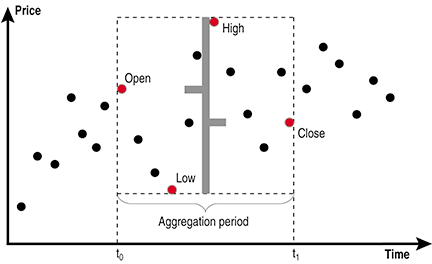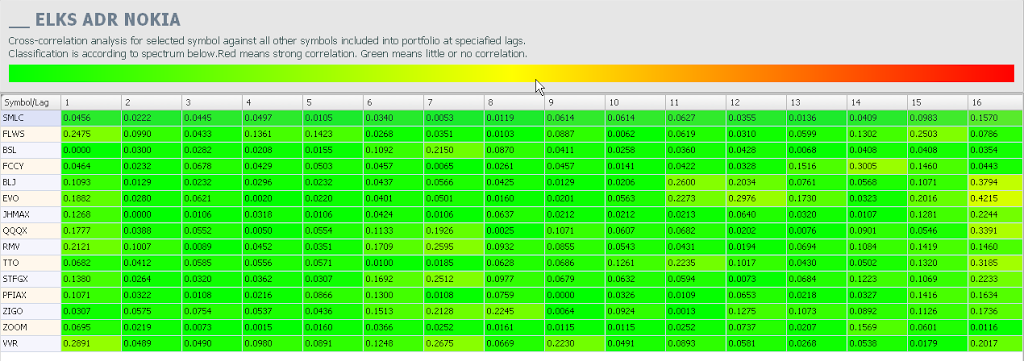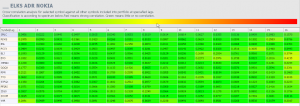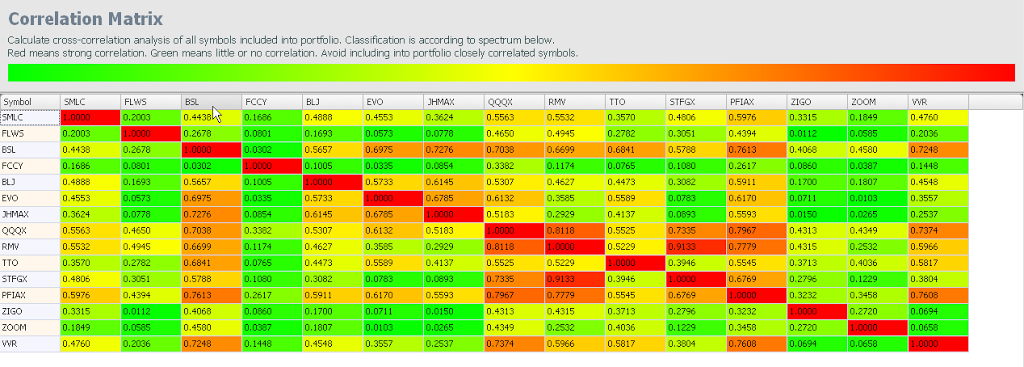Futures, Forex and Equities Trading Strategies on Your Favorite Dealing Platform.
Unraveling The Mystery Of Stock Prices
Here’s a simple method you can apply to interpret financial charts. It uses classical statistics as well as a number of simple chart indicators, which may help you better understand classical charts from the viewpoint of random processes.
Every trader is familiar with stock charts. To most traders the chart is just a common tool, like a hammer is to the carpenter. The exception is the new trader reading charts for the first time or the advanced trader who begins to question the value of the charts he or she watches.
Financial charting is specific. There are many exotic charts common to most modern trading platforms. You may begin with the classical bar charts or candlesticks and continue on to Equivolume, kagi, renko, and others. Add to that numerous technical indicators and strategy signals, and you have something packed full with useful information.
You want to concentrate as much useful information as possible into the chart so you can make timely trading decisions. To the newbie trader, this may appear to be confusing and artificial. To the seasoned professional, trying to determine what information is truly valuable for profitable trading is a vital concern.
Although financial charts can be vivid and attractive, they do tend to have contradictions with modern statistics. The charts can introduce dubious and unstable measures, which in turn become the basis of popular trading strategies. This could increase the risk of your trading operations.
In this article, I will identify the shortcomings of typical charting from a simple mathematical viewpoint and offer some easy indicators and techniques that you can apply to unravel the mystery of common charting data.
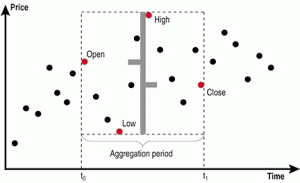
Checkout my recent paper in Stocks & Commodities, March 2010
http://www.traders.com/Documentation/FEEDbk_Docs/2010/03/Zinchenko.htm
http://store.traders.com/stcov281unmy.html
Displacement issues
Lag correlation analysis
Portfolio correlation matrix
Portfolio correlation matrix is the powerful tool for your portfolio optimization. It allows optimal portfolio balancing be excluding from it closely correlated symbols. If you have several closely correlated symbols in portfolio, they similarly behave on market changes and do not add any stability to your portfolio. You must try to keep in portfolio only poorly related symbols. This generally increases portfolio stability because it will increase probability of some symbols growing when the others are on down slump.
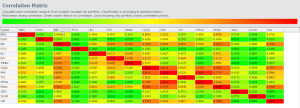
StockFusion Studio gives you powerful option of optimizing your portfolio through correlation matrix analysis, which will highlight optimal combination of symbols in your portfolio.
Adding new symbols to symbol lookup list
It may eventually happen that your favorite symbol is not present in our Yahoo symbol lookup database, for example, due to a lag in database update. In this case, it is very easy to add symbol to lookup list, happen it is valid symbol existing on Yahoo Finance.
Go to “Home & Basics > Symbol” and simply enter proper symbol into search box. Then hit “Search” button. Symbol will be permanently added to lookup list and show up on chart.
Yahoo exchanges
StockFusion Studio supports all world exchanges EOD data free of any subscription fees with its new Yahoo data provider. All registered customers are encouraged to download new version with a lot of other exciting extensions at
http://www.stockfusion.net/download/sfstudio.exe
Data are courtesy of Yahoo Finance
http://finance.yahoo.com/exchanges
Supported exchanges include:
American Stock Exchange
BATS Trading
Chicago Board of Trade
Chicago Mercantile Exchange
NASDAQ Stock Exchange
New York Board of Trade
New York Commodities Exchange
New York Mercantile Exchange
New York Stock Exchange
OTC Bulletin Board Market
Pink Sheets
Buenos Aires Stock Exchange
Vienna Stock Exchange
Australian Stock Exchange
Sao Paolo Stock Exchange
Toronto Stock Exchange
TSX Venture Exchange
Shanghai Stock Exchange
Shenzhen Stock Exchange
Copenhagen Stock Exchange
Paris Stock Exchange
Berlin Stock Exchange
Bremen Stock Exchange
Dusseldorf Stock Exchange
Frankfurt Stock Exchange
Hamburg Stock Exchange
Hanover Stock Exchange
Munich Stock Exchange
Stuttgart Stock Exchange
XETRA Stock Exchange
Hong Kong Stock Exchange
Bombay Stock Exchange
National Stock Exchange of India
Jakarta Stock Exchange
Tel Aviv Stock Exchange
Milan Stock Exchange
Korea Stock Exchange
KOSDAQ
Mexico Stock Exchange
Amsterdam Stock Exchange
New Zealand Stock Exchange
Oslo Stock Exchange
Singapore Stock Exchange
Barcelona Stock Exchange
Bilbao Stock Exchange
Madrid Fixed Income Market
Madrid SE C.A.T.S.
Madrid Stock Exchange
Stockholm Stock Exchange
Swiss Exchange
Taiwan OTC Exchange
Taiwan Stock Exchange
London Stock Exchange
The accuracy of trading performance back testing
Even beginner trader is well aware how important is testing of trading strategy on historical price data to estimate its efficiency. Everybody who tried to write own strategies in Metastock® or Trade Station® was able to watch performance charts of initial capital growth throughout the period of strategy execution and also everybody observed typical statements: “past performance is not a guarantee or a reliable indication of future results” which typically accompany performance charts. One can wonder why at all to pay so much attention to quantities without any exact reliability. The simple answer tells: because there is nothing better to measure trading prospects.
People with basic knowledge of mathematics would surely remember to mention probability theory associated with stock market modeling and high degree of error associated with market trend forecasting. This serves as a root to numerous strategies of risk management, which seek to achieve the balance between profits from aggressive trades and associated losses in case when the market direction estimate is incorrect. However, in many cases such estimates appear also wrong.
There is simple and evident proof for such a high volatility of market forecasts. Market itself is extremely complex system and to date there is no proven theory to explain it in any finite model allowing for easy trend calculation. The most risk estimates suppose that market behaves as some black box system with associated plain probability measures such as moving averages and variances approximating error limits. Nevertheless, there is quite generic evidence that these criteria appear inadequate in most market conditions.
This phenomenon is due to multiplication effect of market influences. Consider long pipeline transporting raw oil. Suppose every part of pipeline can suffer accident with some known probability. It may seem that the ultimate probability of pipeline fault as a whole will appear as a simple sum of associated probabilities for every fragment of a pipeline. However, it is not the case because the fault in every pipeline segment would cause the fault of the pipeline as a whole. Therefore, cumulative probability would appear not as a sum but as a product of associated probabilities. In mathematical terms, it will mean that there will be severely violated the conditions of so known Central Limit Theorem, which defines the statistical variance as a reliable measure of probability distribution associated with the value. It reveals that the most risk management strategies implemented worldwide are not reliable.
Only few mathematicians with good background in statistics can understand and rigidly prove this point. However, one should not be mathematician to observe its real world manifestation in abrupt huge losses of trading institutions and world market instabilities, which, by far, are not the results of errors of some evil minded individuals, as often told to wide public, but are due to fundamental stochastic laws which rule the modern market.
There exist special mathematical techniques devised to diminish the influences of cause multiplication factor on the accuracy of ultimate statistical estimates. Known as nonparametric statistics, they are well described in many statistical textbooks. The simplest of such measures is median point of distribution, which acts as a reliable nonparametric replacement of the average value. Another measures concern special statistical hypothesis testing techniques aimed to estimate reliability in cases where regular variance looses its sense as illustrated above.
Aura Forecast Engine (http://stockfusion.net) is the special forecasting platform, which makes use of nonparametric statistics and other nonlinear techniques such as Friedman coefficient, Hurst coefficient, fractal dimension, K-Sample and Kruskal-Wallis tests and Shannon probability to make automatic expert choice of best market forecasting strategy appropriate to any given set of historical data. It allows making back testing alternatives and measuring the risk in different terms against common trading performance standard. Even despite past profitability chart may look impressive in term of immediate strategy goal, it appears not reliable in terms of estimating future trading performance, which greatly dissolves common risk estimates based on it. Much less known nonparametric alternatives can serve as better reliability guides to investors seeking the better weighted revenue indicators.

